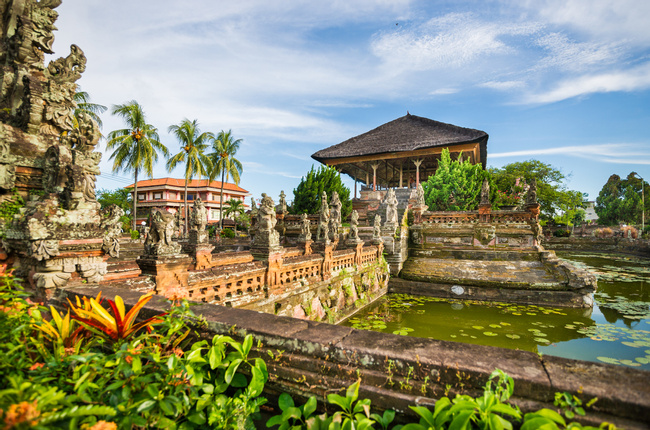
Klunkung
Klungkung is the smallest regency of Bali and one of its historically most important kingdoms, with a seat in the city of Semarapura. Klungklung’s modern name is technically also Semarapura, but locals still mostly refer to this area by its old name. It’s located on the east coast, located about a 1-hour drive from Kuta or Ubud. Some 60 percent of the land area is made up of the three islands: Nusa Penida, Ceningan, and Lembongan.
More about Klunkung
Klungkung and neighboring Gelgel were the centers of the mighty Majapahit empire from the 15th to the 17th century. This was a golden age for art and culture in Bali, and this place was the beating heart of the island. The art scene here produced classic Balinese paintings of heroes and royals.
Klungkung made its mark when in 1908 it was the last Balinese kingdom to hold out against the Dutch invasion. At the very end, outnumbered and outgunned, the King of Klungkung led 200 members of his family and court straight into the face of the Dutch guns, in a ritual march to death, known in Indonesian culture as puputan. Every single person was either killed or committed ritual suicide. You can see the Puputan Monument at the crossroads in the town center.
The biggest must-see here is Kertha Gosa complex (also known as Taman Gili or Island Garden), the remains of the royal palace from the time before the Dutch. The palace was laid out as a large square—believed to be in the form of a mandala—with courtyards, gardens, pavilions, and canals. The painted ceiling of the Kerta Gosa pavilion is especially noteworthy, as this is the only surviving example of classical wayang art in the whole of Bali. Much of the rest of the palace was destroyed by Dutch attacks in the early 20th century. If you want to learn more about the classical wayang style of painting, head south to Kamasan. This ancient village has many art and workshop studios to visit.
It's more than just having a good time or visiting beautiful places (although that's absolutely a part of it!), it's about being part of a unique experience that stays with you.



